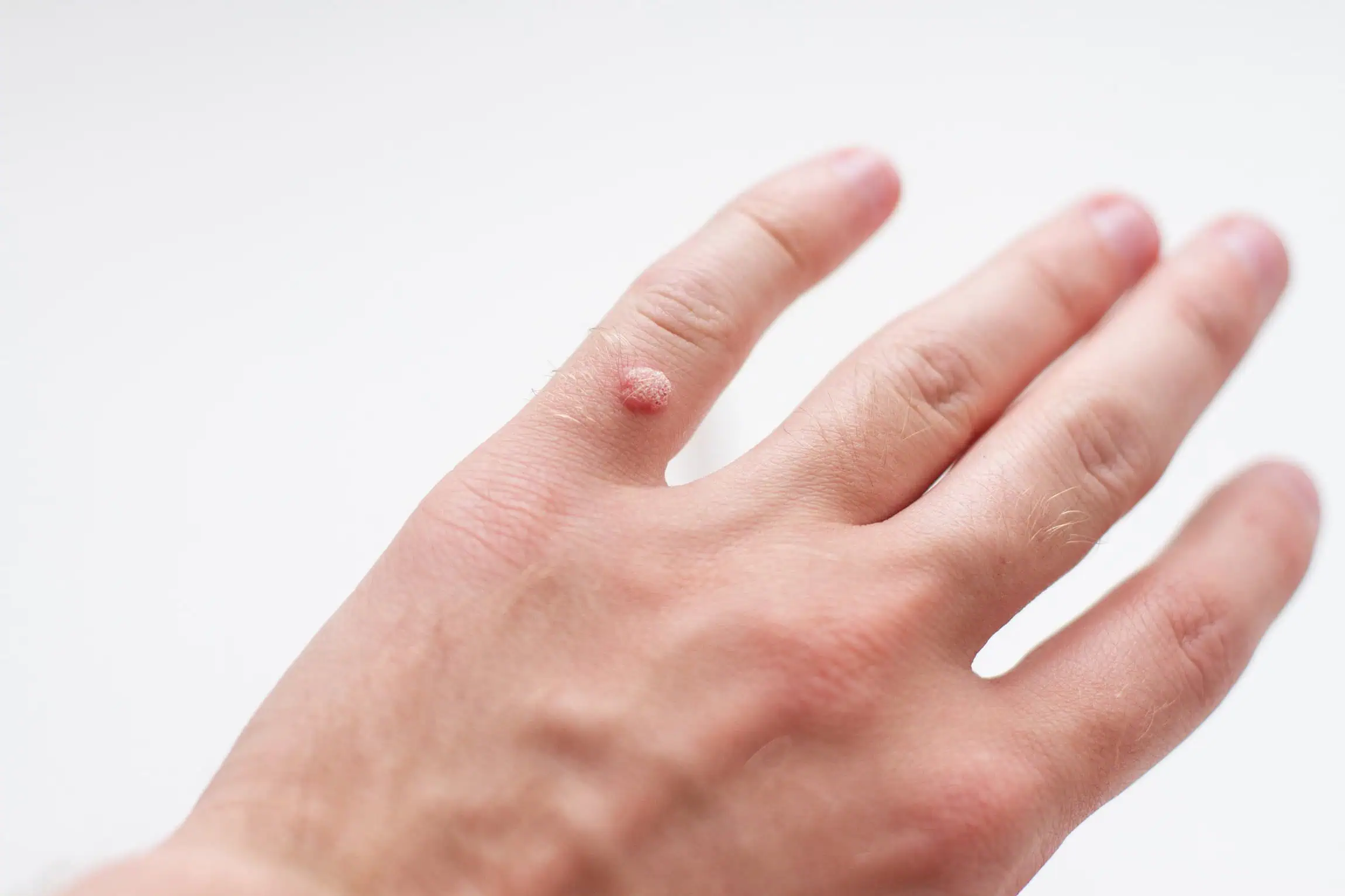Warts in New York, NY

Warts in New York, NY
Warts are benign skin growths caused by the human papillomavirus (HPV). They can appear on different body parts, such as the hands, feet, and genital areas. These growths are often rough and raised, and they can be contagious. It is possible to catch them by touching people with warts or coming into contact with surfaces they’ve touched. There are several types of warts, including common warts, which usually appear on the hands; plantar warts, which grow on the feet; flat warts, which are smaller and smoother; and genital warts, found in the genital area. Each type may need a different treatment to remove them effectively.
What Causes Warts?
Warts are caused by the human papillomavirus (HPV), which infects the skin’s surface. When HPV enters through minor cuts or abrasions, it causes the skin cells to grow quickly, forming warts. The virus spreads quickly through direct contact with an infected person or by touching objects compromised with HPV, such as gym equipment or pool areas. Different strains of HPV lead to other types of warts. Common warts often appear on the hands, plantar warts develop on the soles of the feet, and genital warts occur in the genital area. Each type of wart results from the specific HPV strain involved, and the appearance of warts can vary based on their location and the strain of the virus.
What Are the Different Procedures for Treating Warts?
Cryotherapy
In cryotherapy, the wart is frozen with liquid nitrogen, which causes the wart tissue to blister and eventually fall off. This method is effective for common warts, plantar warts, and some other types. Multiple sessions may be necessary to complete the process.
Electrosurgery
Electrosurgery uses an electric current to burn off the wart. This technique is often used for warts that are resistant to other treatments or in challenging areas. It can cause some discomfort and requires proper aftercare.
Laser Treatment
Laser treatment uses a focused beam of light to destroy wart tissue. This approach is helpful for warts that do not respond to other therapies or are located in sensitive areas. Multiple sessions may be needed, and this method can be more costly.
Topical Treatments
Topical treatments involve applying prescription creams or solutions directly to the wart. These treatments, which may contain salicylic acid or other keratolytic agents, work by dissolving the wart tissue. Consistent application over several weeks is often necessary for effective results.
What Are the Results of Wart Treatments?
The results of wart treatments depend on the type and location of the wart, as well as the chosen method. Generally, cryotherapy and electrosurgery can effectively remove warts with one to several sessions. Laser treatments and topical solutions may yield positive results but require multiple applications or treatments. After successful treatment, warts usually do not return, although new warts can develop if exposed to HPV again.
If you have warts and are looking for effective treatment options, including genital warts removal in NYC, schedule an appointment at Park Plaza Dermatology in New York, NY. Our experienced dermatologists will assess your condition and personalize a treatment plan that best meets your needs.
Benefits of Wart Treatment
- Reduces the appearance of warts
- Eliminates the wart tissue effectively
- Prevents the spread of warts to other areas
- Offers various treatment options to suit different types of warts
- Provides relief from discomfort or pain associated with warts
- It can improve skin appearance and texture
- Prevents potential complications from untreated warts
- Non-surgical options are available for many cases
- Quick recovery time for most treatments
- Professional care and follow-up to ensure successful outcomes
Frequently Asked Questions
The time it takes for warts to disappear after treatment varies based on the treatment method and the type of wart. Cryotherapy and electrosurgery typically show results within a few weeks, with the wart gradually shrinking and falling off. Topical treatments may require several weeks of consistent application before noticeable results appear.
Yes, warts can come back even after successful treatment. This can occur if the virus is still present or if new exposure to HPV occurs. To help prevent recurrence, maintain good hygiene, avoid contact with infected surfaces, and follow any post-treatment care instructions provided by your dermatologist.
Side effects from wart treatments can include temporary swelling, redness, or discomfort in the treated area. Cryotherapy and laser treatments might cause blistering or minor scarring. Most side effects are mild and temporary. Your dermatologist will help you manage these effects and what to expect during the healing process.
Some over-the-counter treatments, such as topical salicylic acid solutions, are available for treating warts at home. However, these treatments may be less effective for persistent or sensitive warts. For better results and to avoid complications, seeking professional treatment from a dermatologist is often recommended.
Yes, genital warts are often treated differently from common or plantar warts due to their location and the potential for recurrence. Genital warts can be treated with topical medications, cryotherapy, or laser therapy customized to the individual’s needs and the severity of the condition.
If your wart treatment isn’t working, consult your dermatologist for further evaluation. They may suggest alternative treatments or investigate other factors that could affect the current treatment’s effectiveness. Addressing any persistent issues is essential to finding a solution that works for you.
